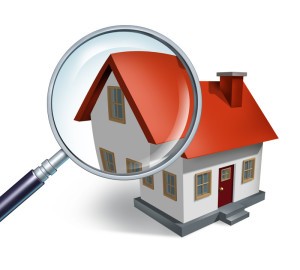Areas Commonly Missed Out by Home Inspectors
 Although the home inspection process can be a thorough process, still there are areas that are commonly missed out by home inspectors. But this however, is but a tip for home owners who may wish to have their homes inspected, whether for personal satisfaction and security or whether you are planning to have a house sold in the market. But let us first get to the importance on the need to have a home inspection.
Although the home inspection process can be a thorough process, still there are areas that are commonly missed out by home inspectors. But this however, is but a tip for home owners who may wish to have their homes inspected, whether for personal satisfaction and security or whether you are planning to have a house sold in the market. But let us first get to the importance on the need to have a home inspection.
The home inspector is trained to know the ins and outs of how home systems work and intended to function together, even the causes and extent of why these systems can fail. And consider as the good investment protector.
Most importantly, many interested home buyers usually find it difficult to remain completely uninformed or unaware of the type, make or design of the house they really want, which usually clouds their judgment and sometimes make decisions without having it thoroughly or intelligently considered.
Ideally, a professional home inspection is an examination of the current condition of a house either up for sale or in the process of being bought.
It is far different and distinct from a home appraisal, especially one that determines a home’s value.
It is also different from a municipal inspection, which is primarily conducted to verify or establish compliance of local building and safety codes.
A home inspector, therefore, will not pass or fail a house, but rather evaluate its physical condition and determine which components and systems may need to go through major repair or replacement.
Here is a list of some common areas missed out during inspections and is intended to inform homeowners about the need to also have these areas checked for possible problems and the need for upgrades or repairs, if any. Sometimes because it is often concealed from view or plain sight, smoke detectors sometimes are missed out during the inspection process. So make sure that if in case it is not checked, you may ask the home inspector to include it in the inspection checklist as well.
Same goes with the electrical fixtures and wirings, which are often embedded in between double walls or embedded in concrete. Backflow prevention devices should also be carefully considered, since this helps prevent any untoward flooding in the event of plumbing and waterline leakage.
Basement bathrooms and laundry tubs are sometimes also missed out in the process because not all homes have these areas and fixtures in their basements. Dryer vents, on the other hand, should also be considered for which standard length of dryer vent hoses should not exceed six feet in length. Another important consideration should also be electrical grounding, since improper grounding could cause major problems from accidental electric shocks or even cause house fires.
Unapproved or substandard flexible gas connectors, valves and uncapped gas lines, which should also be of paramount concern since the slight indications of gas leakages can be tragic and disastrous. Also the same with indoor furnaces not properly operating or is not functioning properly. This should also be checked since problems could range from gas leakage to defective firing systems that could also cause a house fire if left unchecked.
Lastly, make sure that water heaters are installed properly or pressure release valves must be working properly or the important copper run off device that should always be checked, as the same with garage door openers or extension cord wiring being used as permanent wiring for fixtures.
So these are the areas commonly missed out by home inspectors so make it a point to also have these in their inspection checklist, it is for your own safety and security.
To Get The Most Comprehensive Home Inspection In the Seattle Area, Give Us A Call Today 206-745-3975 or Click Here To Schedule Online Now!